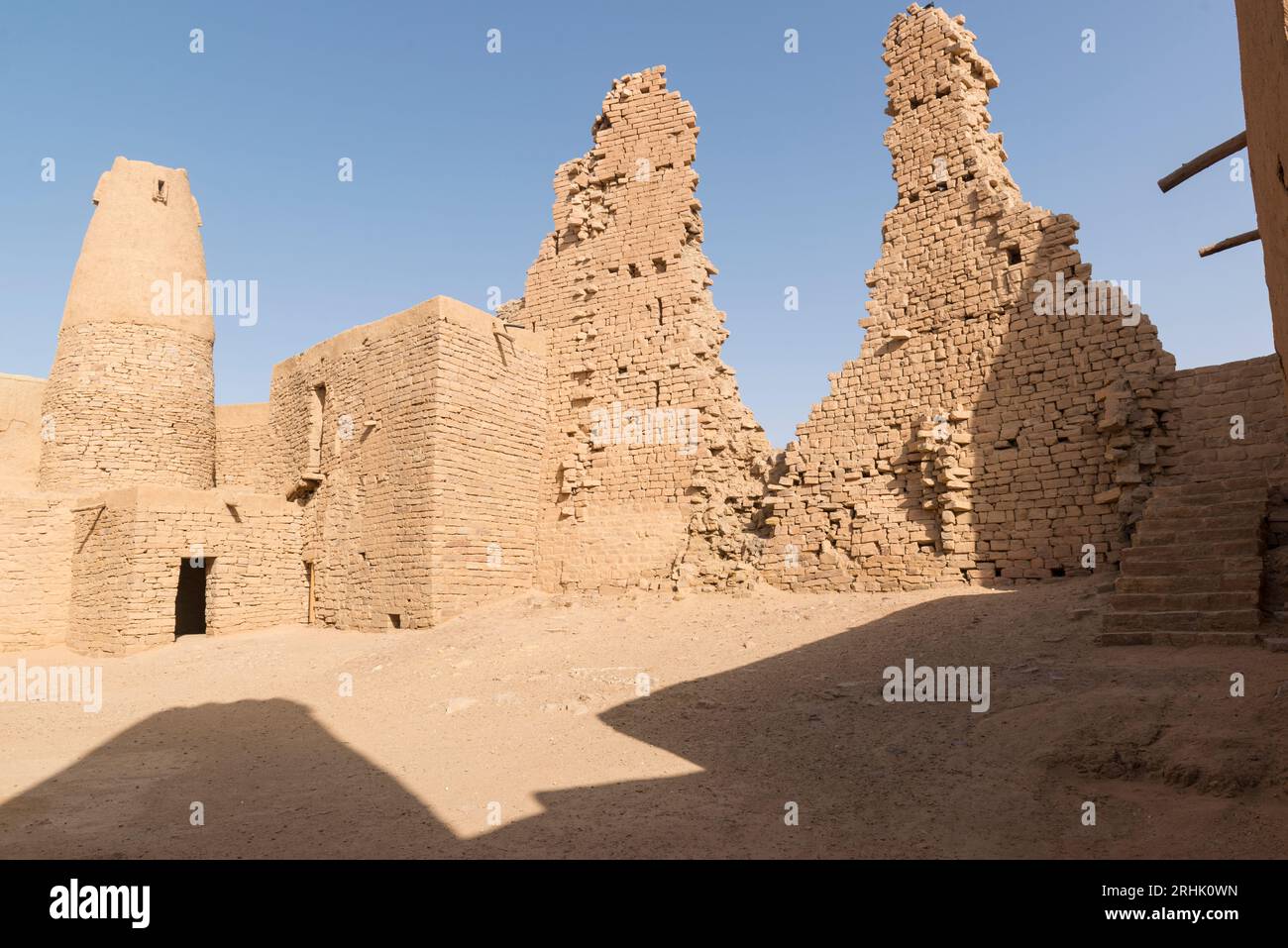The Marid castle in Dumat Al-Jandal, Al-Jawf region, Saudi Arabia

Image details
Contributor:
Bert de Ruiter / Alamy Stock PhotoImage ID:
2RHK0WNFile size:
103.4 MB (3.8 MB Compressed download)Releases:
Model - no | Property - noDo I need a release?Dimensions:
7360 x 4912 px | 62.3 x 41.6 cm | 24.5 x 16.4 inches | 300dpiDate taken:
20 May 2023Location:
Marid Castle, Dumat Al-Jandal, Al-Jawf region, Saudi ArabiaMore information:
Wikipedia: Marid Castle (or Marid balance) is a historic military fortress located in the city of Dumat Al-Jandal in the Al-Jawf region of Saudi Arabia, about 50 km away from Sakaka. It dates back to the first century AD, and the oldest mention of it dates back to the third century AD when the Queen Zenobia (240 - 274) invaded Dumat al-Jandal and Tayma, and she could not storm the fortress. Therefore, she said: “ Marid has rebelled, and Ablaq has glorified.” The castle is located on a hill height of approximately 620 meters above sea level, and overlooks the city of Dumat al-Jandal, which is affiliated to the Al-Jawf region from the western side. That contributed to its fortification force as the view of the castle can oversee all parts of the town and see the one coming from long distances. The castle of Marid was named for its rebellion and insurrection against those trying to storm it, as Yaqout al-Hamwi mentioned. Zenobia tried to invade Adumato in the 3rd century. When she left the castle without storming it, she said her famous saying Marid has rebelled, and Ablaq has glorified.". In 633 CE, Khalid ibn al-Walid annexed Dumat Al-Jandal the newly formed Islamic empire. In 1853, Talal Ibn Rashid ( Hail’s governor) damaged the castle with two cannons. In 1909, Nawwaf Ibn Sha'lan besieged it for ten months until he could wrest it from the Rashids. The castle is originally rectangular but now oval in shape, and it can be accessed from two main entrances, one in the south of the castle and the other in the north next to the tower. It is two floors; the first was built by stone, whereas the upper was built by mud. There also are four conical towers with height of 12 meter, and they were created at various times. Inside the castle, there are two wells, and its floors contain rooms for guards, shooting and observation. The castle is surrounded by a large wall of stone with many openings for observation. The fence has two entrances, one from the south and the other f